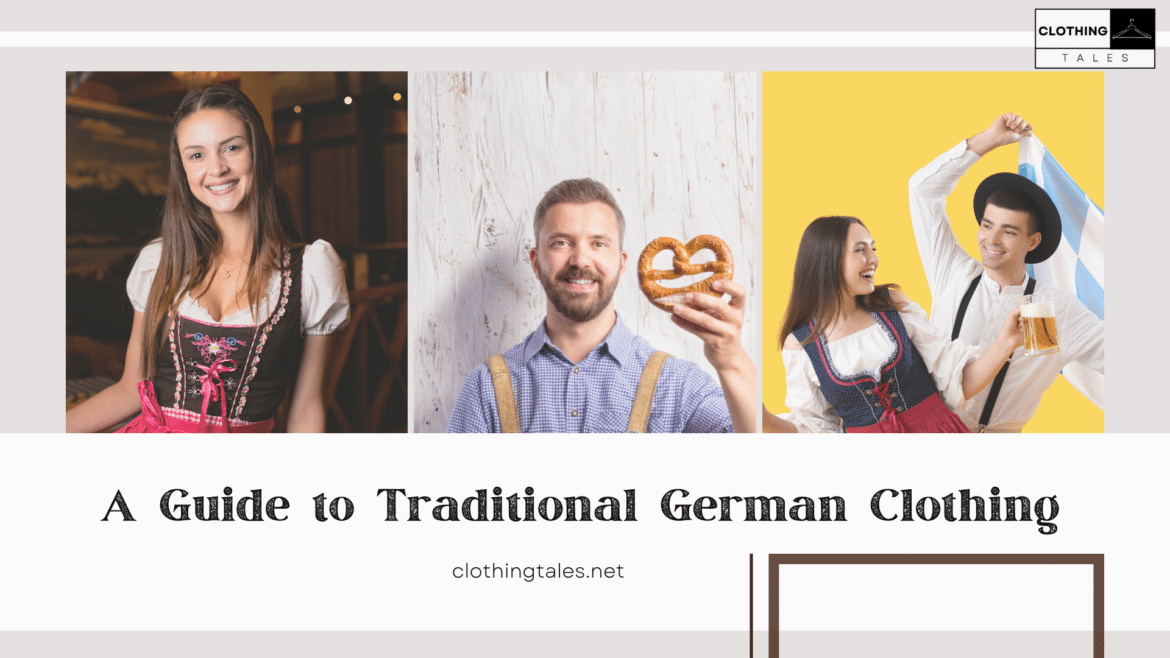Table of Contents
Anyone who is into rich history, culture, cuisine, and clothing might find Germany an interesting country. This is because this country is located in the heart of Europe and is the epitome of a rich culture. From the local cuisine to tourist spots and clothing, everything about German history is so fascinating that it makes one spellbound. Moreover, Germany is known to celebrate their everlasting history in Oktoberfest, the world’s largest beer festival. Such a festival is celebrated by opting for traditional German clothing for men and women alike. So, if you are intrigued to know more about history and types of attire, we have meticulously crafted this article guide for you.
History of German Traditional Clothing
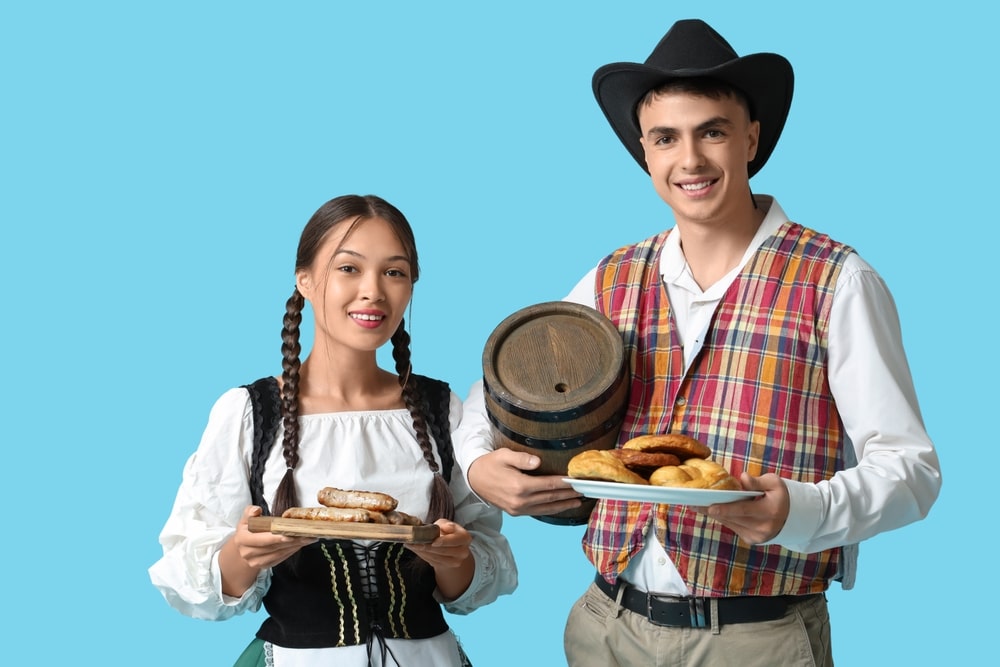
Hello, my lovelies; if you are eager to know about the history and significance of rich traditional German clothes, you are at the right place. From folk costumes to cultural events, Germanic culture is known to have its roots deep in history.
Historical Origins
Where It All Began
The roots of Trachten, or traditional German clothing, go back to the Middle Ages when social class, geography, and purpose all played a role in what people wore. Trachten served more than just looks: they kept people warm, signaled their social standing, and marked their regional identity.
- Middle Ages Style: Distinct clothing for different classes.
- Practical Fashion: Weather protection and symbolic value.
- Timeless Connection: A link to heritage and pride.
Development and Regional Variations
As time went on, each German region put its own spin on Trachten. Bavaria brought us the famous dirndl and lederhosen, while Franconia and Swabia boasted unique styles that reflected local traditions, crafts, and lifestyles.
- Regional Pride: Every area has its own stylish twist.
- Symbolic Styles: Dirndl and lederhosen symbolize Alpine culture.
- Heritage and Craftsmanship: Each piece tells a story.
Social Significance
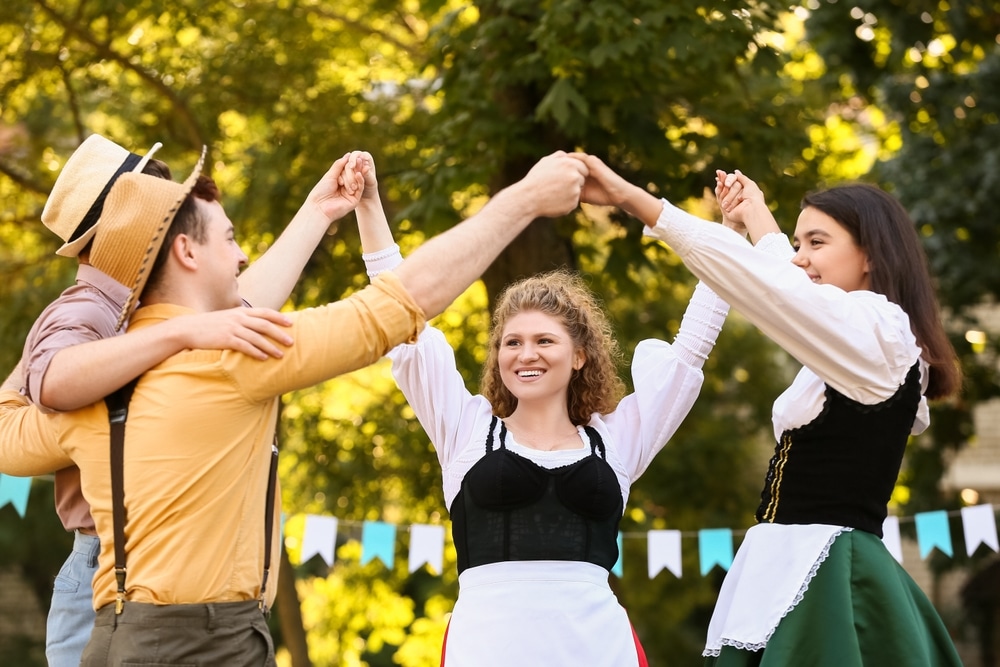
More Than Just Clothes
Traditional German clothing plays a starring role in social gatherings, festivals, and celebrations. For many, it’s a family tradition passed down through generations, helping people feel connected to their history and community.
- Community Bonding: Worn during festivals and family events.
- A Sense of Belonging: A way to connect with heritage.
- Symbol of Tradition: Celebrates values and customs.
Cultural Heritage and Revival
During the 19th and 20th centuries, as cities grew and times changed, there was a renewed love for preserving these traditions. People saw Trachten as a valuable piece of German culture, and Trachtenvereine (costume clubs) sprung up to help keep these clothes alive and well-loved.
- Tradition Resurged: Costume clubs and preservation efforts.
- Events & Celebrations: Worn in parades and cultural fests.
- Timeless Appeal: A mix of old-world charm and modern-day style.
A Glimpse of Oktoberfest
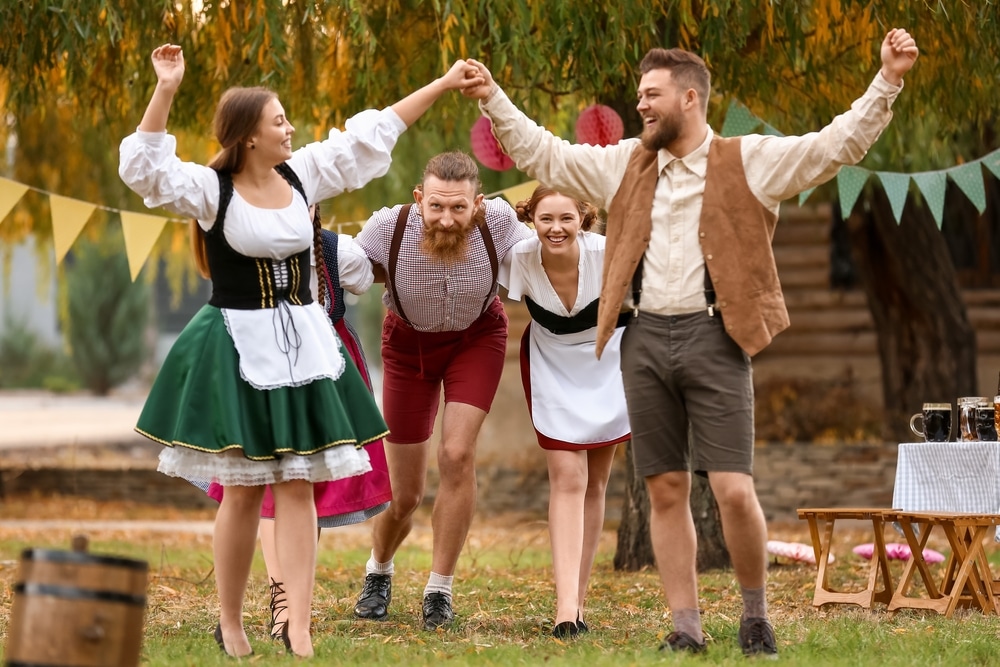
Every year, Oktoberfest brings out the best of Bavarian culture—and traditional attire is part of the fun! People flock to Munich dressed in their finest dirndls and lederhosen to enjoy the world’s largest folk festival filled with music, rides, and plenty of beer.
- Party in Style: Oktoberfest is the place to show off Trachten.
- Food and Fun: Enjoy bratwurst, pretzels, and classic German brews.
- Heritage on Display: Celebrating German culture with pride.
However, if you want more details on Oktoberfest, you can check out this article.
Elements of German Traditional Clothing
So, now, coming to the main point, what is the authentic German traditional clothing for males and females? We can say that female traditional German clothing is a bit different from men’s clothing.
However, there are similarities in the overall design of the attire. So, let’s talk about the different components of traditional attire in detail.
Dirndl
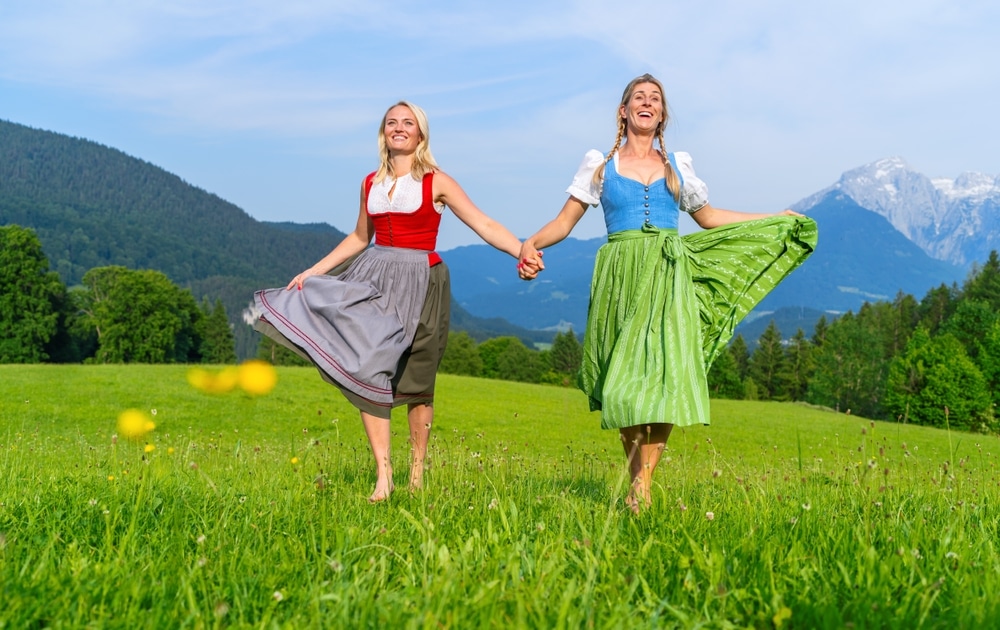
The dirndl is a beloved dress worn by women, especially in Germany and Austria. With a snug bodice, flowing skirt, and colorful apron, it’s flattering, festive, and functional!
- Bodice: Form-fitting with buttons or lacing to create an hourglass shape.
- Blouse: Puffed sleeves and a sweetheart neckline add feminine flair.
- Skirt & Apron: Skirt length varies; apron colors can even show marital status!
Lederhosen
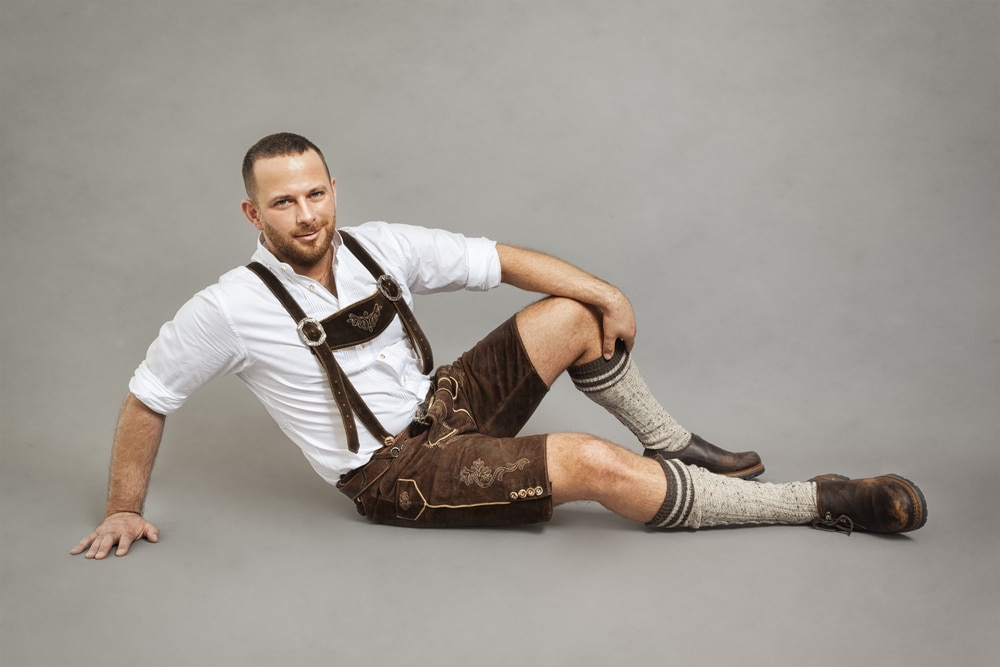
Men’s lederhosen is made of rugged leather shorts or breeches that are sturdy enough for outdoor activities and stylish enough for festivals. They’re often worn with suspenders and a casual shirt.
- Breeches: Durable leather with embroidery for a rustic look.
- Suspenders: Practical and decorative with fun embellishments.
- Classic Shirt: Cotton or linen, often with detailed cuffs or collars.
Accessories
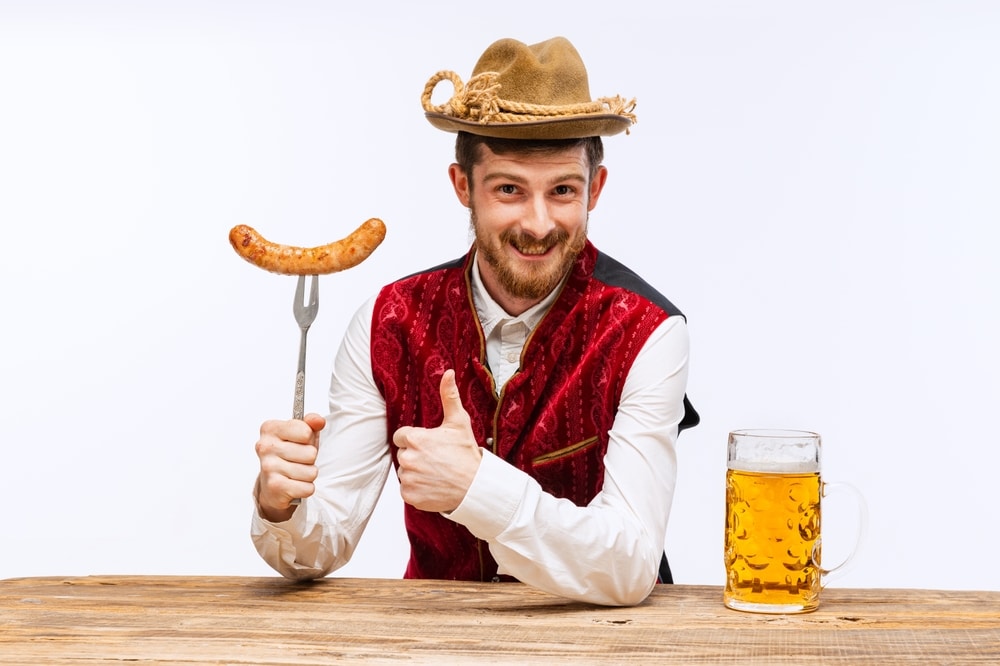
No outfit is complete without accessories! Both dirndls and lederhosen are paired with items that add character and tradition, like hats with feathered decorations, cozy wool socks, and sturdy leather shoes.
- Hats: Feathered hats or “Gamsbart” for men.
- Socks: Wool socks, known as Trachtensocken, with detailed patterns.
- Shoes: Sturdy leather shoes, known as Haferlschuhe, for both men and women.
Trachtenbluse and Trachtenhemd
The Trachtenbluse for women and Trachtenhemd for men are classic shirts that finish off the look. They’re lightweight, comfortable, and often decorated with lace or embroidery for a stylish nod to tradition.
- Trachtenbluse: Light cotton blouse with delicate lace for women.
- Trachtenhemd: Embroidered shirts for men, both formal and festive.
- Comfort Meets Culture: Perfect for a day of dancing or dining.
Conclusion
Summing up, the article covered the basic components of typical and authentic German clothing. One who is a fashion aficionado should try out these timeless and iconic clothing pieces to stand out and turn heads wherever they go.
Rustic Tales!
